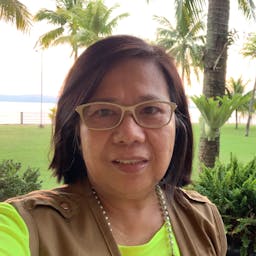Without the Middlemen
Jan 21, 2015
Story
When I was young, I dreamed of becoming a journalist. I didn’t know where that dream came from because neither I know how to write nor have the potential of a journalist. I wasn’t recruited to be a part of the school publication in the elementary high school days because the opportunities were only reserved for those enrolled in the first section, reputed to be dominated by high performers. What I recall is my mother Anastacia, a single mom, used to sell newspapers and magazines in our small town which might have sparked my love affair with the written word. That was in the late 1960s when television was rarely available in the big cities, Internet was never thought of and the only accessible source of news and information is the transistor radio.
I tried to work on that dream by choosing journalism as my preferred college course, however, my college entrance examination performance did not reach the quota allocated to the Journalism course. I stopped dreaming and instead got involved in school and organizational newsletters to test my writing skills. Those were my brief attempts in campus journalism.
My big break started when the Internet came into being and Web 2.0 became accessible to everyone who wants to learn and have something to share. This time, I don’t need to have a stellar scholastic performance to be able to participate in the conversations in the development community. This time, I won’t need the imprimatur of teachers and professors before I can share my thoughts and experiences to my selected audience and to the world. This time, with Web 2.0 I am my own journalist, I am empowered to choose my own beat; to interview my sources and document my experiences and interaction with the people and communities I encounter.
With Web 2.0, ordinary citizens can already report the real situation of women and their families in remote communities that are not reached by mainstream media. Factual information of injustice, abuse and government neglect can already be reported without going through the rigorous editorial circuits and state censorship. News stories can directly reach the target audience in real time as long as Internet is accessible and reliable. The stories of ordinary women who struggles from day to day to lead extraordinary lives from little known places can now be shared via the world wide web.
Voices of grassroots women to clamor for change can now be amplified in solidarity with sisters from all over to reach the desks of policy makers, influentials and decision makers. Women can now get support to their petitions online. Women’s groups can share their initiatives and good practices in addressing gender discrimination for other women to learn from.
With Web 2.0, we can market ideas, goods and causes as well as share our hopes and dreams from our own perspectives without asking consent and approval from the “middlemen”. Isn’t it both exciting and empowering?




